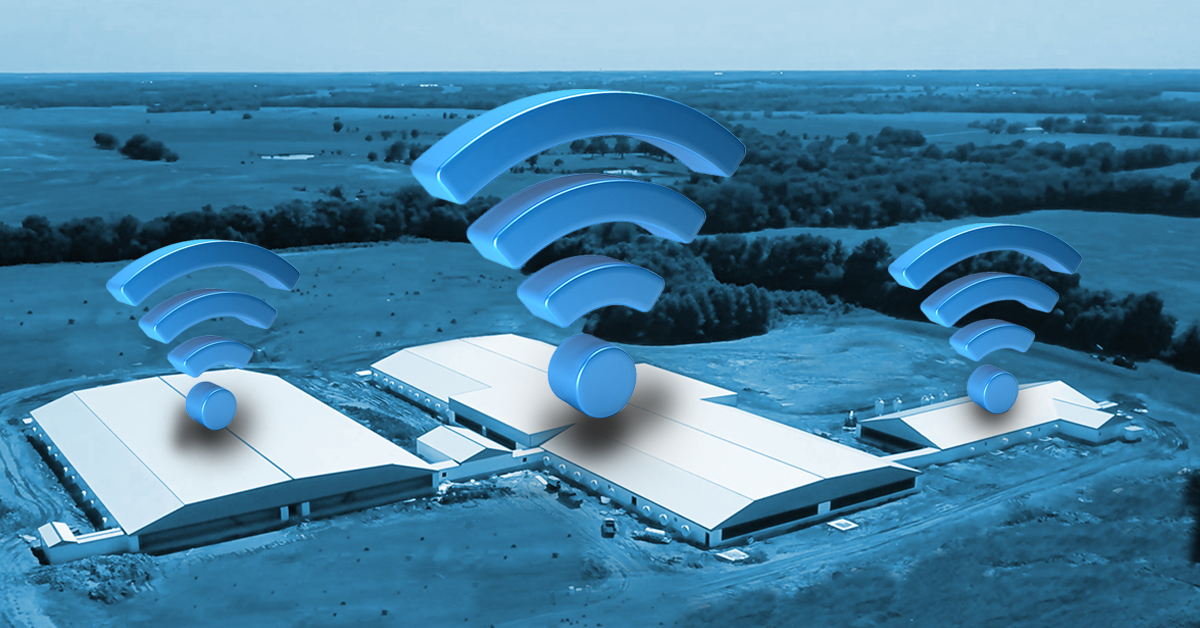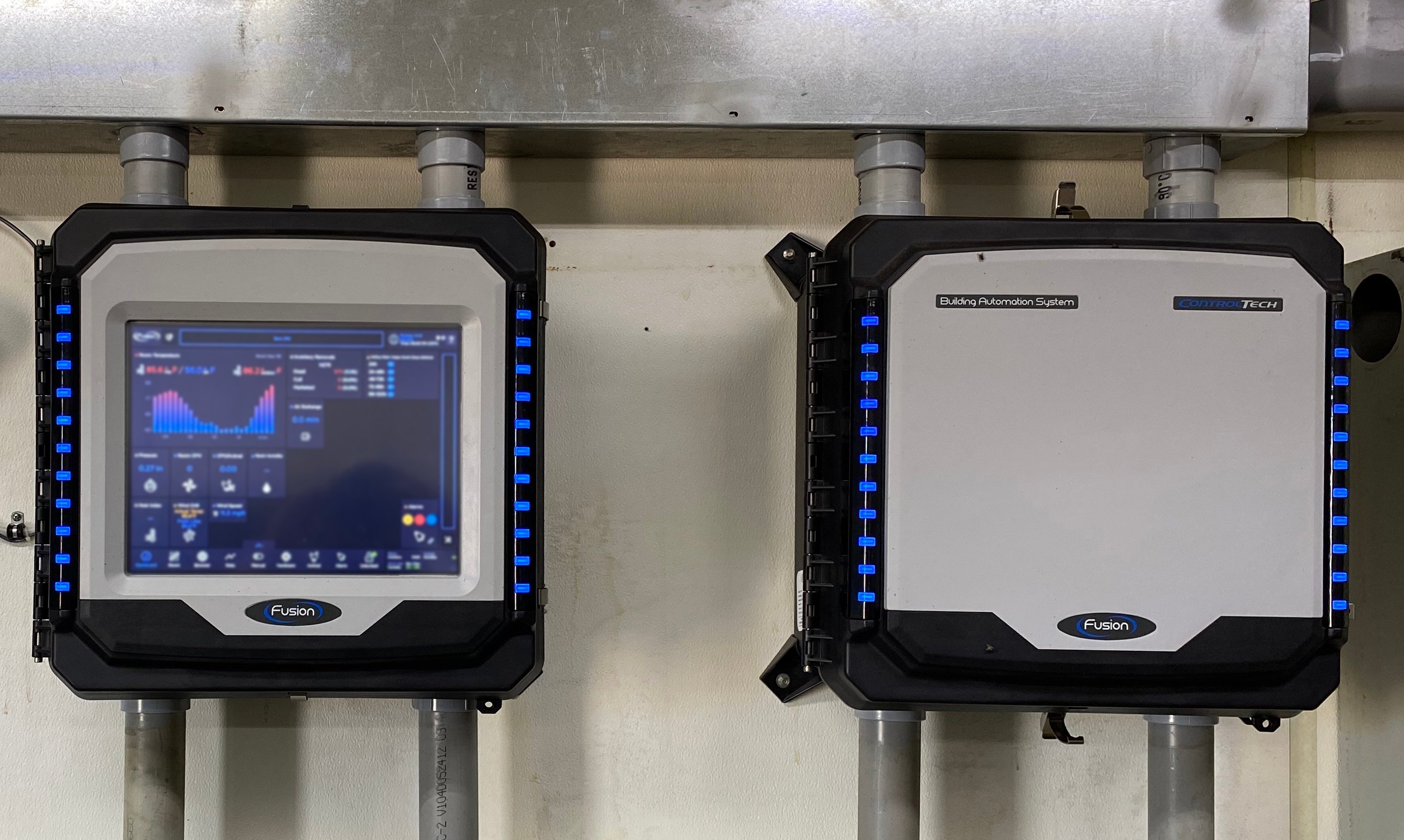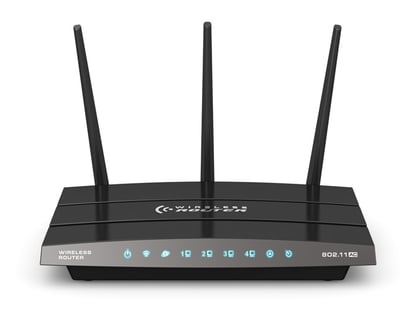
We're involved in setting up more and more wireless systems in hog barns, new builds, and barn remodels alike. Now wifi is terrific with some planning and proper equipment. So how does it work? We spent some time with network pro Owen Gingerich who helped on our Honey Grove barn project, and New Standard's tech guru, Dwayne Morrow, to discuss the pros and cons and where wifi in barns stands in 2022.
The Shift
We've been at a tipping point for quite a while now. Tech placed in barns from the '70s, '80s, and '90s is, to put it simply, obsolete. Most systems from these decades are based on a Motorolla processor; it covers about 80-90% of the pig barns. z
So why has this tech lasted as long as it has? These chips were mass-produced, incredibly reliable, and easy to develop. There wasn't the need for anything more. The main issue we're seeing now is these chips and systems are worn out. Replacements are no longer available, and support for 20-year-old software is not an option.
The tech boom has touched every part of our lives, including our farm. The internet, wifi, and the digital revolution have brought many possibilities to the table.
Pros of Wifi in your barn
When you jump 20 years into the future, you will see some significant improvements. Going from a limited amount of sensor readings and features, a couple of pushbuttons, and simple digital text displays to wireless, 15" touch screens that can do pretty much whatever you imagine can be a humbling experience.
Instead of building the barn to the capabilities of the control, we can now design our controls for the barn, giving us enormous flexibility. Another leap is that controls are primarily software-driven instead of being limited to the hardware. Changes, updates, and more are done over the cloud, keeping you up-to-date always.
The connectivity we have now allows us to run our barns remotely and monitor animals, feeding trends, and more from anywhere we have an internet connection. This constant and consistent pulse on our barn allows us to address issues quicker and be more attentive to our animals—no more running across the barn to check settings. Instead, we can grab a tablet or smartphone. Wifi has killed the pen and paper in barns, creating more efficiency we need.
Another benefit of these new systems is the speed of information. With old systems, you maybe see updates once per minute. With a high-speed wifi setup, we see updates every 10 seconds. So making fan or temp adjustments are seen accurately and almost immediately.

Challenges
Humidity and Ammonia
As with anything great, there are some exceptions. So what are the challenges and cons of wifi in hog barns?
Humidity and ammonia are two of the biggest challenges for using wifi in barns, and here's why. As most of us know, water and electronics don't often play nice. Barns are naturally humid environments and add in the regular pressure washing activities; it's a sure thing your equipment will get wet at some point.
Ammonia isn't much kinder when it comes to tech. Even small amounts of ammonia will corrode and crack copper connections, and it can be tough on the circuit boards found in every wifi router.
If you were to buy an off-the-shelf all-in-one solution from the local big box store, you'd be pushing your luck to get a year of the thing working, less, if the pressure washer gets away from you! So how are we getting around this?
Two solutions have proved to work well. The first is putting your equipment, access points, routers, switches, etc., in water and dust-tight enclosures. This is a great first layer of protection and has proven to be a great solution thus far.
A second option is opting for IP-rated equipment. An IP rating shows how effective an item is at blocking out foreign bodies, such as dust and water. We've found wifi equipment with an IP 67 rating that we've been using without boxes with success thus far. The equipment is standing up to the humidity, ammonia, and occasional splash.
 Getting a Strong Signal
Getting a Strong Signal
Wifi technology has expanded by leaps and bounds in the last few years, and innovations continue to arise. Faster speeds and better coverage are undoubtedly welcome upgrades in the barn. However, one big challenge can be maintaining a solid wifi signal as you work your way through the barn.
The wifi system installed in our Honey Grove project is designed using individual wifi components. Instead of the all-in-one unit that includes your router, switch, and antennas, we've broken out the individual pieces. With dedicated Access Points (AP), routers and switches, we can create better coverage with fewer or even no dead zones for seamless dependable wifi.
These components use handoff technology. To put it simply, a "handoff" is when a device's connection to one access point becomes weak and is then automatically transferred to a new connection point with a stronger signal.
So where are we at?
In our opinion, wifi is a must. Going wireless makes sense if you really want to utilize today's tech to its fullest potential. Beyond that, the pros outweigh the cons; wifi components will only get better and more reliable, and getting your barn wifi ready today will pay dividends in the long term.
If you have questions about getting your barn wifi ready or how to get the most out of your current setup, contact your nearest New Standard location, we'd love to help.





